Gender portrayal in Indian ads: Advertisers cannot hide behind ‘ground reality’ excuse
The furor over the latest ads of deo brand Layer’r Shot in the last few days has once again brought into sharp focus gender depiction in Indian ads. The ads, which have been made by Layer’r Shot’s in-house team, have been slammed for promoting rape culture. The Ministry of Information & Broadcasting and ASCI have ordered this offending ad to be pulled down.
While a lot has changed in Indian advertising regarding portrayal of women, doing away with stereotyping and being more sensitive towards different communities, every once in a while, some ads are created that undo all the progress made.
In the global gender inequality index, 2020, India ranks 108th out of 153 countries, an increase from its rank of 130 out of 150 countries in the year 2015. A study titled ‘Gender Bias and Inclusion in Advertising in India’ by UNICEF and Geena Davis Institute finds that the frequency of female characters dominating screen time in Indian advertisements is 59.7%, while their speaking time is 56.3%. The study also shows that most of the time, female characters are shown to advertise for cleaning, food supplies, detergent, beauty products and are portrayed to be in caretaker roles. Moreover, a larger percentage of women are depicted as married than the male characters, while male characters are shown to be taking household and future decisions more than the female characters.
Another study shows that around 4.1% females are shown to be shopping, 4.8% cleaning, and around 5.4% as being engaged in the preparation of meals or purchase, compared to 2.3%, 2.2% and 3.9% of the same for the male characters. Male characters are also more likely to be portrayed as more funny at 19.1% compared to 11.9% for female characters. Indian advertisements also promote light skin preference for women – from the Glow & Lovely (earlier Fair & Lovely) ads to Ponds, Garnier, Whitetone and more.
Of course, there have been numerous brands such as Ariel (#ShareTheLoad), Whisper (Touch the Pickle), All Out (#StandByToughMoms), among others, that have been changing the game of bringing in gender sensitivity and doing away with stereotyping in Indian ads. However, unfortunately there are enough ads out there that remain tone-deaf and are also repeat offenders.
Aazmeen Kasad, Advocate & Professor of Law, observed, “While some advertisers claim that they are portraying the ground reality, there are now countless examples of Indian women, who have broken all barriers, are extremely successful and are the torchbearers in their respective fields. The most recent case-in-example being where our women sportspersons proved to be the surprise element, bagging a historic number of metals at International Sporting events such as the Olympics and at the Paralympics, against all odds. Women leaders in business are performing exceedingly well too. The advertising industry can play a crucial role as a game changer in the quest of breaking the stereo-typical portrayal of women in Indian ads.”
According to a study, ‘GenderNext’, by ASCI and Futurebrands, women are shown to be suffering from ‘spender syndrome’ in financial ads and in vehicle and gadget ads as ‘childlike passengers’. According to a survey, women do not typically favour ads which show them getting empowered or getting freedom after putting up a constant fight. It reinforces the negative stereotyping of women and gender bias.
Aazmeen Kasad ephnasised, “Talented women need to be recognised and made a part of brand stories to keep them alive in the minds of people. As the nation starts seeing women being showcased as the hero in ads, there will most certainly be a shift in the perception of women right from the grassroot levels within our villages to the metros. The industry can serve as a catalyst by empowering women in the roles scripted in our ads. The recent Cadbury’s Dairy Milk TVC did just that when the female protagonist was seen playing the cricket match on the field, while her boyfriend/ male partner was cheering for her.”
Besides trying to create awareness about a product, ads also hold the key to enter into the consciousness of the consumers and plant the right ideals and virtues, those which are already known or need further reinforcement such as stopping gender bias. However, there are enough ads floating around that objectify and stereotype women, such as Imperial Blue’s ‘Men will be Men’ ad. There are a lot of deo ads, male innerwear ads and other category ads that sexualize women or show them as damsels in distress needing to be rescued or an arm candy or slogging away in the kitchen to whip up the perfect meal for her family. These ads remain caught in a time warp and refuse to acknowledge the progressive women of today. According to the GenderNext study, which looked at around 600 ads across 10 cities, portrayal of progressive gender roles led to 32% increase in short term product sales and an increase in brand equity by 51%. Moreover, it also revealed that progressive gender portrayals and higher ROI are correlated.
According to Manisha Kapoor, CEO & Secretary General, ASCI, “Women see progressive advertising as their ally in their journeys to more fulfilling lives. The GenderNext report found that a lot of gender stereotyping happens in implicit ways. The way a woman is dressed and styled, the way she may be backgrounded, the power hierarchy and dynamics in the situation, the way in which she seems to be in constant service of others, or the way in which others become a hurdle in her progress. Each category has some stereotypical ways in which they frame their protagonist and the exercise needs to start with the marketers’ own imaginations of women today, which needs to be rooted in their real lives and aspirations.”
“Awareness, introspection, and use of some helpful frameworks like the SEA framework and the 3S screeners that were created as part of the GenderNext study can help advertisers make more progressive ads. Diversity in the team creating advertisements is another way in which creators can incorporate fresh perspectives. Lastly, the industry needs to realise that progressive ads make a strong business case,” Kapoor affirmed.
A study by Kantar & ASCI revealed that around 74% of women consumers and 70% of male consumers think that the way they are portrayed in ads is completely out of touch with who they really are. In general, progressive ads are seen to be more engaging, enjoyable, unique and even surprising. The study further found that young women find the depiction of the ideal woman, wife, mother in advertisements to be burdensome and uninspiring. Imbibing greater presence, different perspectives, environmental allies, depiction of self-esteem, self-empowerrment are some of the ways of positive gender portrayal and ending gender inequality in advertising. “One of our findings during the study was that young women didn’t find ads showing women toiling through their work aspirational. They called out shallow attempts at progressive advertising, and found a lot of mainstream advertising problematic. This is also borne out by the studies done by Kantar, a leading market research and insights firm,” pointed out Kapoor.
She further said that portrayal of genders in a positive light can unlock numerous opportunities for brands to get higher ROI and become memorable for consumers. According to another study conducted by Kantar, the progressive portrayal of women in ads resulted in them being more effective. The study indicated that the depiction of a positive portrayal of genders led to an increase in brand equity by around 51% and short-term product sales by 32%. “Brand equity is of utmost importance for any brand, and they strive to increase it as much as possible. Advertisers can evaluate their own ads using the ‘SEA’ framework and the ‘Three S’ screener. These frameworks, if used correctly and consistently, are likely to result in an improved marketing ROI,” added Kapoor.
Kasad stressed that brands should bear in mind that women too are their target audience and depict progressive gender portrayals in their ads. Today, (and post the pandemic with online shopping becoming an integral way of life now), women make decisions on purchases for the home and the family. The ROI will be apparent when advertisers will make conscious decisions to address not only the men, but also the women as their target audience.
Sharing his point of view, Sumanto Chattopadhyay, Chairman & Chief Creative Officer, 82.5 Communications, noted, “The trouble is that often ads work by reflecting reality rather than by trying to change it. Once in a while a brand does come along and try to lead the change – but they have to have the deep pockets, stature and image to carry off something like that. That is why ads tend to stick to stereotypes, which is not to say that this is okay. We need to be vigilant as brand custodians as well as members of the public, not to mention public and private institutions that could shepherd the change, to call out harmful portrayals and to encourage positive ones. I think Population First has consistently done their bit over the years in terms of recognising positive gender portrayals of girls and women in advertising and media with their Laadli Awards for gender sensitivity. I was also pleasantly surprised to see that Kyoorius Advertising Awards have made it a policy to be mindful of gender portrayal while judging entries.”
He further added, “Today, a lot of purpose-led ads feature stories of husbands supporting their wives’ decisions to have careers, couples sharing the load, fathers handing over the mantle of the family business to daughters and so on. These are all wonderful ideas. But the real change will come when such progressive portrayals become embedded in all ads – especially where these depictions are not the central theme of the ad. What I mean is that, for example, a cement ad could feature a woman engineer when the topic of the ad is not gender neutrality. It just so happens that one of the characters in the story is an engineer. And, while we are conditioned to show the engineer as a man, we change it to a woman engineer without making a big deal out of it.”
“It is vital to break the unconscious bias that is portrayed in ads with regard to women. Countless ads depict women doing something wrong historically and a male protagonist or a male voice-over advises her to shift to a new product which will help her in cleaning better or looking fairer or becoming healthier and so on. This stems from a belief that women don't know what's best for them and need a male support to guide them to make the right decisions. Such scripts need to change. And for that, there needs to be a shift in the perception of women in the minds of the team; both within the agency working on the ad of the brand and at the advertiser's end to make a conscious choice on how the woman character in the advertisement should be depicted,” concluded Aazmeen Kasad.




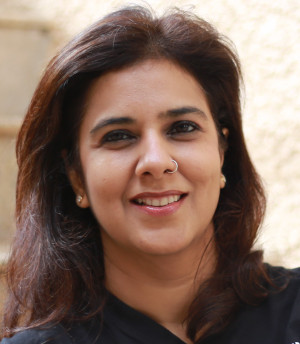


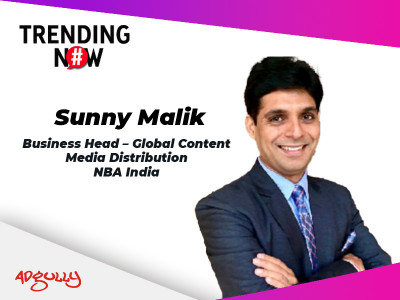
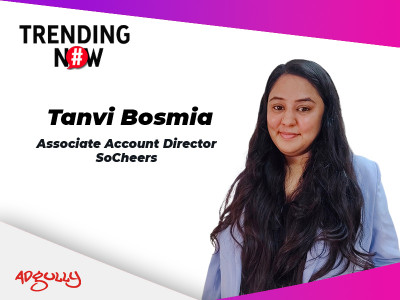
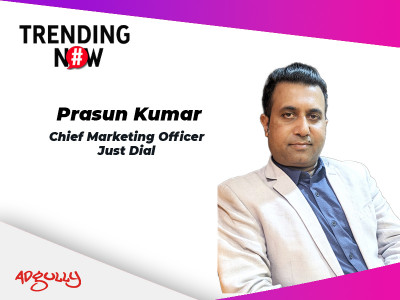





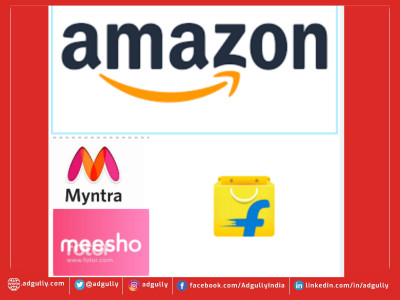




Share
Facebook
YouTube
Tweet
Twitter
LinkedIn